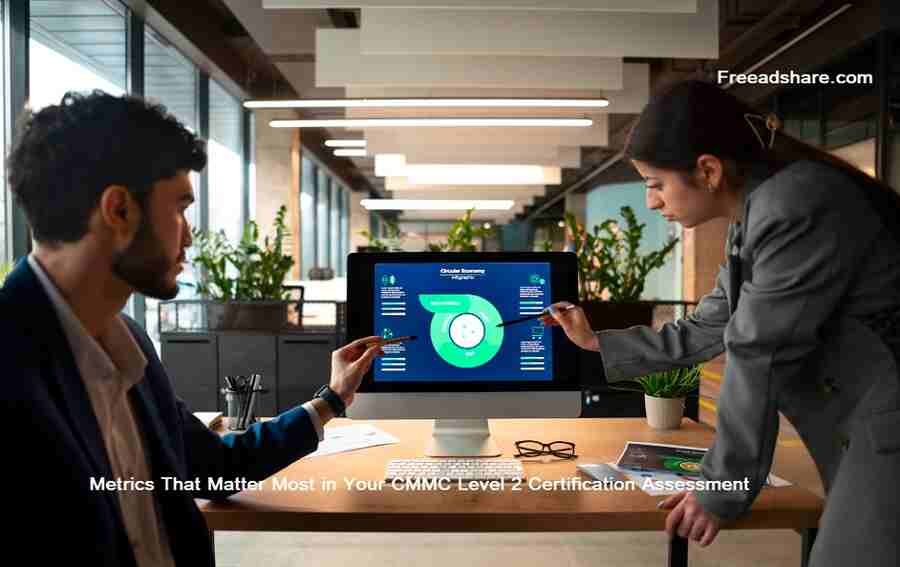
A strong CMMC Level 2 Certification Assessment score doesn’t happen by chance—it’s the result of focusing on the right measurements throughout preparation. These metrics reveal whether an organization is ready for an audit or if there’s work to be done. Knowing where to place attention can mean the difference between passing the assessment the first time or facing costly delays.
Gauging Documentation and Control Implementation Levels
An assessor will look closely at how well policies, procedures, and security controls are documented. It’s not enough to have them in place—they must be clear, accessible, and consistently applied across the organization. This means security policies should map directly to CMMC Level 2 practices, with evidence showing they are followed in day-to-day operations. In the context of the CMMC assessment guide, documentation gaps are one of the first red flags auditors encounter.
Implementation levels go hand in hand with documentation. If a control exists only on paper but is rarely enforced, it will not earn a high score. Organizations preparing for a CMMC Level 2 Assessment should track the frequency and quality of control execution, whether it’s password updates, access reviews, or system monitoring. Reliable implementation metrics demonstrate that security measures are not just written expectations—they are standard operating practice.
Benchmarking Scoping Precision for Level 2 Success
Scoping defines the boundaries of the assessment. A precise scope ensures only relevant systems, processes, and assets fall under the CMMC Level 2 Certification Assessment. Over-scoping can make compliance unnecessarily complex, while under-scoping risks missing essential security components. This metric evaluates how effectively the organization has identified and categorized its Controlled Unclassified Information (CUI) environment.
Accurate scoping also impacts resource allocation. By mapping systems correctly, teams can focus CMMC consulting efforts where they matter most, avoiding wasted time and budget. An effective scope not only streamlines the audit but also supports ongoing compliance management, making it easier to track changes and adjust controls as the environment evolves.
Assessing Your Posture with NIST 800-171 Alignment
Since CMMC Level 2 draws heavily from NIST 800-171, alignment with its requirements is a vital metric. This means comparing existing controls and practices to the 110 security requirements outlined in NIST’s framework. Gaps in alignment reveal where remediation is needed before the CMMC Certification Assessment takes place.
Tracking NIST alignment over time is just as important as the initial review. Regular gap analyses allow organizations to measure progress, confirm remediation effectiveness, and validate that controls stay in place as systems change. This metric provides a direct link between preparation work and the expectations an auditor will have during the assessment.
Evaluating Preparedness for Third-party Audit Processes
Readiness for a third-party audit extends beyond technical controls—it includes how well teams can respond to auditor questions, produce evidence, and demonstrate compliance in real time. This metric evaluates both procedural readiness and staff confidence. Organizations that conduct mock assessments often perform better during the actual CMMC Level 2 Certification Assessment because they’ve rehearsed the process.
Preparedness also means having evidence organized and readily available. Waiting until the day of the audit to compile proof of compliance slows the process and increases the risk of errors. Metrics that measure documentation retrieval speed and accuracy provide a clear indicator of how smoothly the audit will go.
Understanding Domain-level Strengths and Vulnerabilities
CMMC Level 2 covers multiple domains, from Access Control to Incident Response. Measuring performance by domain helps identify both strengths to maintain and weaknesses to improve. A strong Access Control domain may offset a weaker Audit and Accountability domain in perception, but not in scoring—auditors expect balance across all domains.
These metrics allow targeted improvements. For example, if metrics show consistently low scores in the System and Communications Protection domain, CMMC consulting can focus resources on encryption, monitoring, and boundary defense before the assessment. It’s a data-driven way to ensure no single domain jeopardizes the overall certification.
Quantifying Your Policy and Procedure Effectiveness
Policies and procedures can look polished on paper but fail in execution. This metric measures not only whether policies exist but also whether they produce the intended security outcomes. For example, an incident response policy might mandate reporting within a specific timeframe, but if metrics show most incidents exceed that limit, the policy’s effectiveness is in question.
Quantifying this effectiveness helps refine policies so they are practical and achievable. The goal is to have procedures that staff understand, follow consistently, and that demonstrably reduce risk. This clarity directly influences CMMC Level 2 Assessment results, as auditors will test whether documented procedures match operational reality.
Reviewing Your Compliance Roadmap Toward Certification
The compliance roadmap is a forward-looking measure. It tracks progress toward completing all requirements for the CMMC Certification Assessment. This includes milestones for remediation, training, documentation updates, and evidence gathering. A clear, measurable roadmap ensures nothing gets overlooked as the assessment date approaches.
Reviewing this roadmap regularly also provides an early warning system for delays. If milestones consistently slip, leadership can adjust timelines or allocate additional resources to stay on track. By keeping the roadmap accurate and current, organizations maintain control over the certification process rather than reacting to last-minute surprises.


